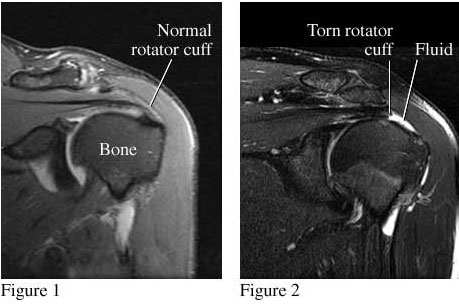Rotator Cuff Repair
Rotator cuff tears are repaired arthroscopically during an outpatient procedure. Three or four small incisions are made around the shoulder and the rotator cuff tear is addressed. If the tear is small and does not involve the entire tendon thickness, debridement may be done to clean up the torn portion, leaving the intact portion alone. Bigger, full-thickness, tears require anchors to fix the tendon back down to the bone.
Small holes are punched in the bone to allow non-metallic suture anchors to be inserted in the bone and tie the rotator cuff down onto the bone. Over a six week period, the tendon will heal back to the bone. Along with addressing rotator cuff tears, bone spurs overlying the rotator cuff are also removed to give the fixed rotator cuff more room to move without impingement of the cuff to the bone spur. Surgery takes approximately one and a half to two hours and patients are discharged home later the same day.
Recovery after rotator cuff repair includes sling immobilization for six weeks to allow the tendon to heal back to the bone followed by three to four months of physical therapy to regain motion and strength. During Sling immobilization, special instructions are given for home exercise program. Most patients recover their full range of motion after three to four months and will regain full strength between 9-12 months.
The outcomes of rotator cuff repairs vary based on multiple factor. A few of these factors include the size of the tear, how long the tear has been present, quality of tissue of rotator cuff, age of the patient, how much retraction and atrophy is present, and adherence to post-operative instructions.After recovery most patients are pain free and are able to return to all of their pre-injury activities such as golfing, weightlifting, baseball, football, skiing, tennis, and basketball.
Click Here to learn more about Shoulder Conditions.

